The future of FLUOR
nic scott
NASA ARC
FLUOR to JouFLU


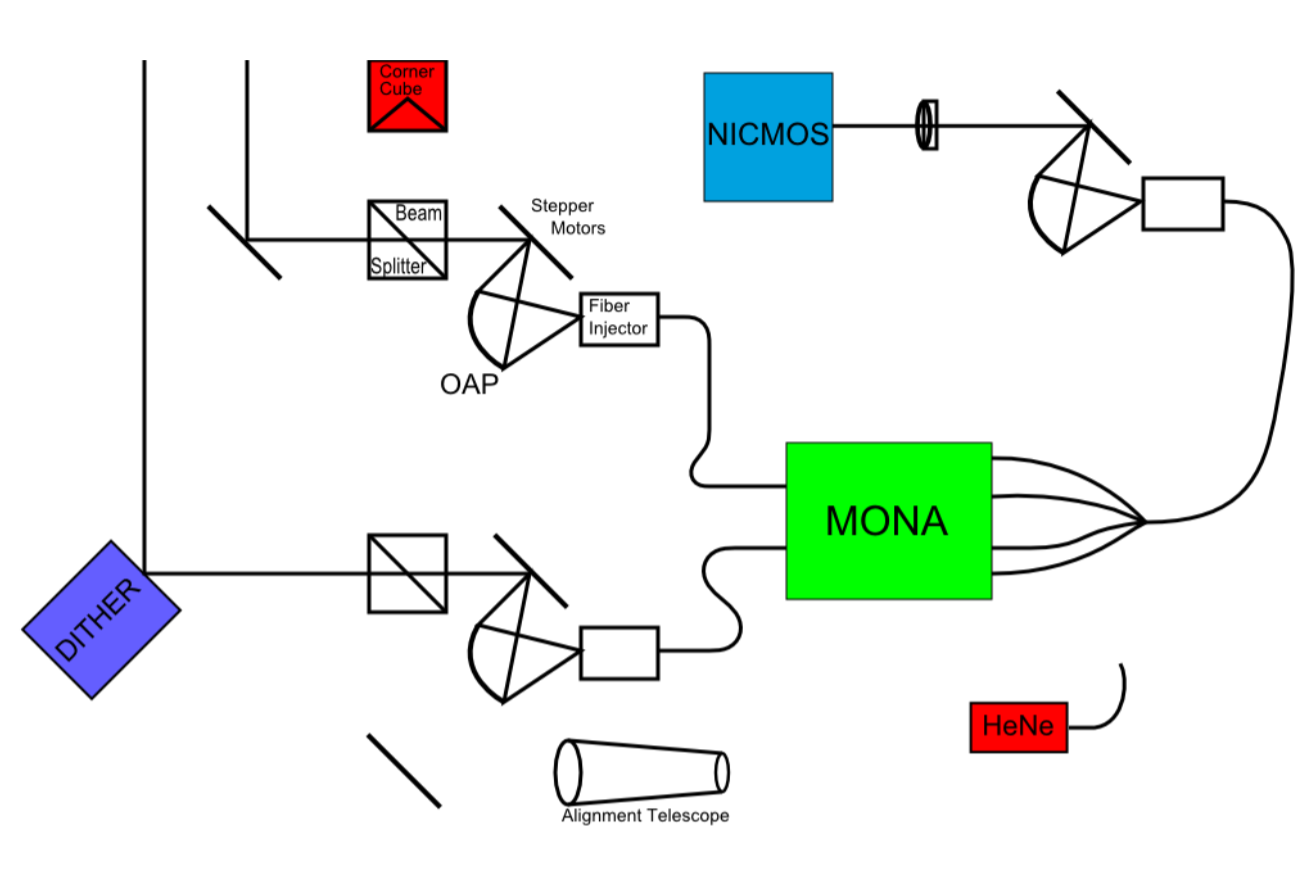


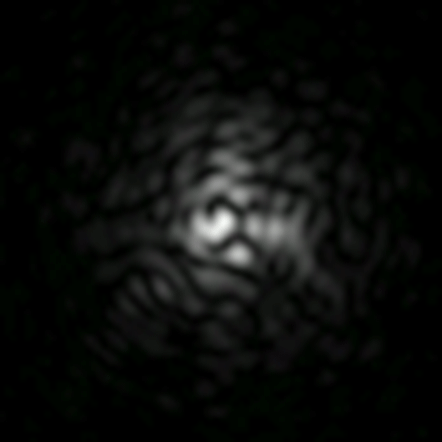
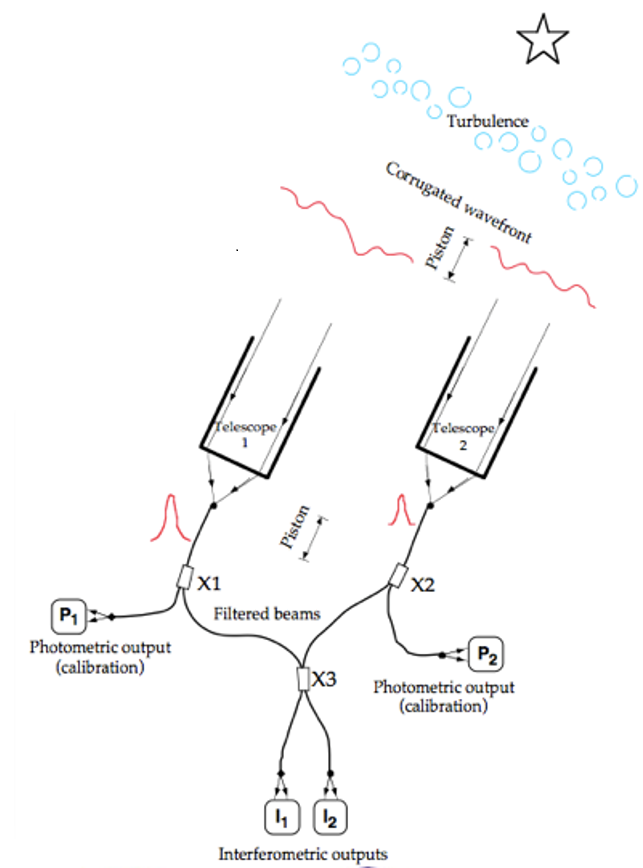

Science Case: Exozodis

Exozodiacal Disks
- Not to be confused with debris disks
- Require interferometry to detect
- High levels (100-1000 zodi) even in >100 Myr systems
- Confound the detection of exoEarths
- Probe the structure of inner system
1 AU terrestrial planet with gap
0.5 – 1.5 AU warm dust disk 500K
0.1 – 0.5 AU hot dust disk > 1000K
Center A0 star @ 10 pcc
< 100K
100 AU
100-1400K
< 10 AU
HZ
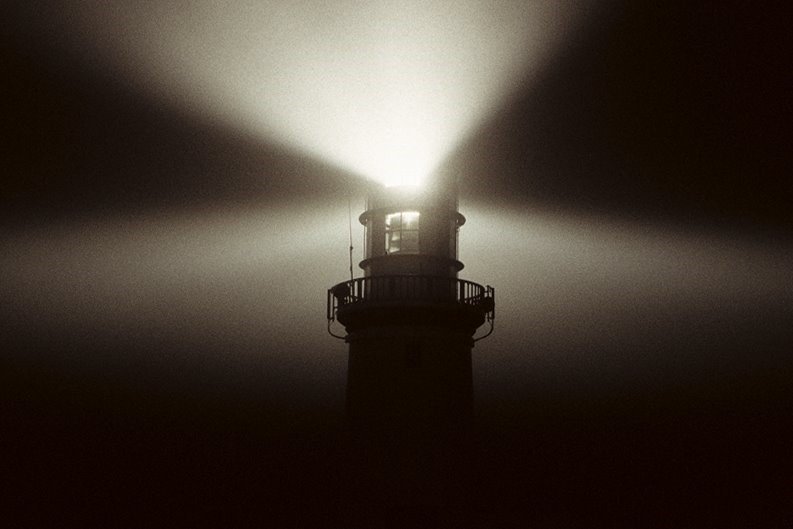
Resonant structures could indicate planets indirectly [7]
Zodi levels of dust affect Earth detection
Our disk is the most luminous object in SS after the Sun.
Earth would be a clump in the zodi at visible and IR [1]
10-20 zodi would compromise exoEarth detection [2,3] Interferometric, astrometric, direct, photometric, ...
exoEarth detection is divided by factor of 2 for exozodi level increase of 10 [5]
exoEarth detection becomes challenging if exozodi level is ~20 zodis and clumpy [4]
\(\geq\)10% of Gyr old MS stars may have enough exozodi dust to complicate exoEarth imaging [6]
Correlation with spectral type or outer reservoir?






\(\leftarrow\) tentative correlation with stellar rotation supports the magnetic trapping model but not conclusive.
Nuñez et al. 2017

6/33 new circumstellar excesses at \(\geq\)1% level
- 2 of these detections can be attributed to uniform CSE
- 4 are known or suspected binaries.
The difference of between the instrumental noise and the JouFLU significance distribution yields an estimate of 9 undetected excesses.
Nuñez et al. 2017
NIR
VLTI - PIONIER
Ertel et al 2014 merged FLUOR+PIONIER samples (n~125) reaching 0.25% precision
-
Rate decreases across spectral type
-
Matches cold disk trend. Common origin?
-
-
No correlation b/t hot dust and cold dust.*
-
Different origin for hot and cold discs?
-
-
Slight increase in exozodi detection with stellar age
-
Stochastic rather than steady-state process [46,33,34,35]?
-
-
No correlation b/t exoplanets and exozodi.


HD 7788 shows variability
-
excess disappeared for a year

Near Infrared Exozodi Variability Study
Dust production mechanism poorly understood
Destruction factors:
- Sublimation
- Radiation Pressure
- Poynting-Robertson (P-R) drag
Models:
- Steady state/continuous replenishment
- Steady state/trapped nano-grains
- LHB & outgassing
- Keplerian time scale ~weeks/months




iot Psc
ups And
kap CrB
gam Ser
HD 98058
- \(\Phi\) Leo spectra shows signs of exocomet infall and evaporation [45]
HD 210418
- A-type with 1.7 ± 0.5% excess from 2013
HD 222368
-
F-type with 1.3 ± 0.3% excess from 2013
Tet Boo
-
Solar type star with no previously known dust excess
-
Significant excess at 10 micron with the LBTI nuller.
-
Potentially huge implications on our understanding of exozodi level upper limits, and dust generation mechanisms around such stars.
| From LBTI | |||
|
10700 | exoplanet host | |
| 13 Uma | 78154 | LBTI excess | |
| kap01 ceti | 20630 | exoplanet host | |
| 1 Ori | 30652 | ||
| tau Boo | 120136 |
The Problem
Signs of problems


differential polarization rotation
differential polarization phase delay
Added Lithium Niobate plates to correct polarization, but decreases throughput.
Limiting Kmag ~4.5-5.2 from 2015-2016 is now ~3

1. Connect Beam 5 fiber to input A and Beam 6 fiber to input B. (default arrangement)
2. Close the beam 6 shutter and measure the four outputs.
3. Open the beam 6 shutter, close the beam 5 shutter, and measure the four outputs.
4. Open both shutters and measure the four outputs.
5. Move the beam 5 fiber to input B, move the beam 6 fiber to input A, and repeat all 3 measurements.
6. Swap beam 5 and beam 6 on the beam sampler and repeat the complete set of 6 measurments.
determined beam ratio and coupling efficiency for each input
I2 interferometric channel does not see anything from beam A. Could be a broken fiber in MONA?
- no sig difference in coupling efficiency of the two stages.
- no sig difference in light in beam 5 and beam 6
- Most significant difference:
- input A 80% to photometric output
- input B 13% to the photometric output
-
Each branch of the fiber bundle transmits basically the same (max counts well w/i +/- 8%)
- Bundle still seems fine
- Confirms that the two stages have essentially the same efficiency.
- MONA seems to be the problematic part.

The ratio of light reaching the interferometric output from input A and Input B.




"The conclusion we seem to converge upon is that the problem is in the MONA box.
Not enough light coming from Input A to the inteferometric channels."
MONA_Normalized_Count
This shows the total amount of light getting through normalize for Kmag, ie Count / 10\(^{(mag/-2.5)}\). Decline in 2016 after we put the polarization corrector plates in.
Percentage of light from input A(top) and B(bottom) reaching it's photometric output and the two inteferometeric outputs. There is a clear change after the unit was sent back to France. It seems much more light is going to the photometric channel and much less to the interferometric outputs.


Possible Solutions
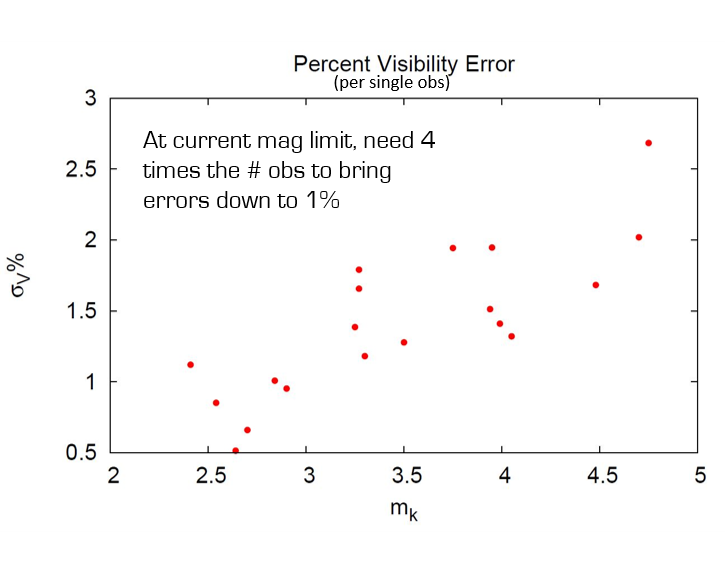
JouFLU upgrade paths
JouFLU prior limit

JouFLU potential
JouFLU present
Getting to 5th mag could more than double the number of targets observable
CHARA AO is now coming online \(\rightarrow\) greatly improved obs efficiency
- ZBLAN IO chip
- losses ~0.4 db/cm
- get H band IO chip as "bonus"
- v-groove and coupling optics (Ozoptics)
- input and output mounts
- option: 4 beam H+K simultaneous
Saphira Selex detector
- will enable drastically better spectrally dispersed results
- +350k
| transmission | <0.01 | db/m |
| bandpass | 2 - 2.3 | \(\mu\)m |
| NA/lambda_c | 0.089 | \(\mu\)m |
|
20-30% to photom, 70-80% to Interferometric. I1 & I2 balanced |
| NA | 0.17 ± 0.01 |
| cutoff | < 1.95 \(\mu\)m |
| bandpass | 2.0 - 2.4 \(\mu\)m |
Goal is 1% excess detection at 5σ to mK < 5.

Takeaway
-
Explore the apparent variability of known exozodis
- long-term monitoring
- clues to source and formation of the dust
-
Expand strong exozodi sample
- leveraging LBTI and prior surveys
- from ~100 \(\rightarrow\) ~1000 objects
- Use spectral dispersion to resolve the thermal/scattered dilemma
- Risk mitigation for coronagraphy/starshade missions
-
Target selection and characterization for mid/large missions (TESS, LUVOIR, HabEx, etc)
- exozodis likely to be dominant noise source
- Precision diameters and fundamental astrophysics
Science gaps on Exoplanet program office list
-
Science gap Number 4
- Planetary System Architecture
- Science gap Number 6
- Yield estimation for exoplanet direct imaging missions
- Science gap number 7
- Improve target lists and compilations of stellar parameters for exoplanet missions in operation or under study
- Science gap number 10
- Precursor surveys of direct image targets
- Science gap Number 11
- Understanding the abundance and distribution of exozodiacal dust
NN-Explore/NASA
ExoZodiacal
Monitoring
Observatory

References
[1] Kelsall et al. 1998
[2] Beichman et al. 2006 ApJ 652
[3] Roberge et al. 2012
[4] Defrère et al. Proc. SPIE 2012
[5] Stark et al. 2014
[6] Kennedy & Wyatt 2013
[7] Wyatt et al. 1999
[8] Fajardo-Acosta et al. 2000
[9] Mannings & Barlow 1998
[10] Laureijs et al. 2002
[11] Lawler et al. 2009
[12] Wyatt et al. 2007 ApJ 658
[13] Defrère et al. 2015
[14] Mennesson et al. 2014
[15] Absil et al. 2013
[16] Ciardi et al. 2001
[17] di Folco et al. 2004
[18] Absil et al. 2006
[19] di Folco et al. 2007
[20] Absil et al. 2008b
[23] Defrère et al. 2011
[24] Mennesson et al. 2011a
[25] Mawet et al. 2011
[26] Lisse et al. 2012
[27] Weinberger et al. 2011
[28] Defrère et al. 2012a
[29] Lisse et al. 2013
[30] Ertel et al. 2014
[31] Marion et al. 2014
[32] Nuñez et al. 2017
[33] Kral et al. 2013
[34] Krivov et al. 2006
[35] Wyatt et al. 2007 ApJ 663
[36] Defrère et al. 2012 A&A 546
[37] Marshall et al. 2016
[38] van Lieshout et al. 2014 A&A 571
[39] Jackson et al. 2012
[40] Rieke et al. 2016
[41] Su et al. 2016
[42] Wyatt et al. 2008
[43] Su et al. 2013
[44] Lebreton et al. 2013
[45] Eiroa et al. 2016, A&A 594, Oct 2016
[46] Faramaz et al. 2016
[47] Ertel et al. 2018
- CHARA observations are NEW and DIFFERENT from LBTI - They provide additional, key information
- focus on upper level of exozodi occurrence, variability monitoring -unique to CHARA, clues to source mechanism, improving statistics. Complementary and follow-up observations to LBTI surveys.
- The CHARA measurements show variable, and different Zodi light from past surveys and LBTI.
- Multiple baselines/position angles possible. Spectral dispersion can show if thermal or scattered light.
- Will drive design of LUVOIR/HABEX technology for chronographs and starshades.
- Critical in search for HZ planets.
- CHARA could observe about 50 of the stars on the LUVOIR list.
- CHARA upgrade can get TESS stellar radii to 1% or better
- high res spectra only get to about 10% or higher.
- Addresses science gap 11 and leads to technology gaps
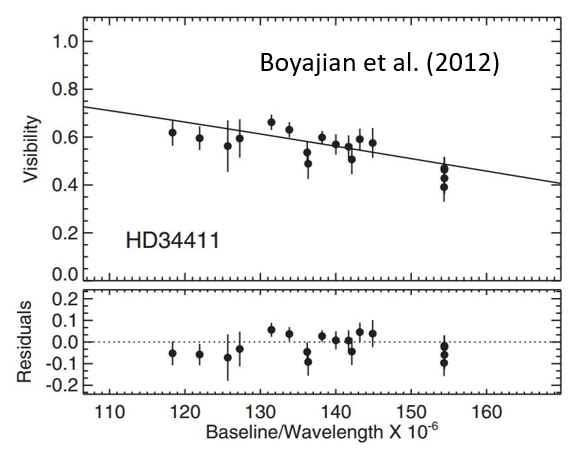
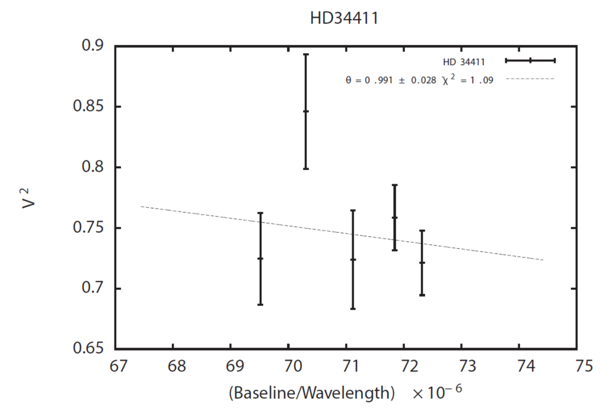

Can we be sure of variability?
- Is instrument stable? Checked diameters independently
- DRS stable? Reduced old data with new pipeline
- 3 calibrators / object, each checked and calibrated against itself
- if a cal is resolved it pushes toward false negative, not false positive
CLASSIC
JouFLU
Excesses detected for some of the targets originally observed by Absil+ 2013.
- modified instrument, new DRS
- our data for stellar diameters are compatible with known from other beam combiners
- our data for binaries are compatible with expected values
- not an instrumental or data reduction artifact




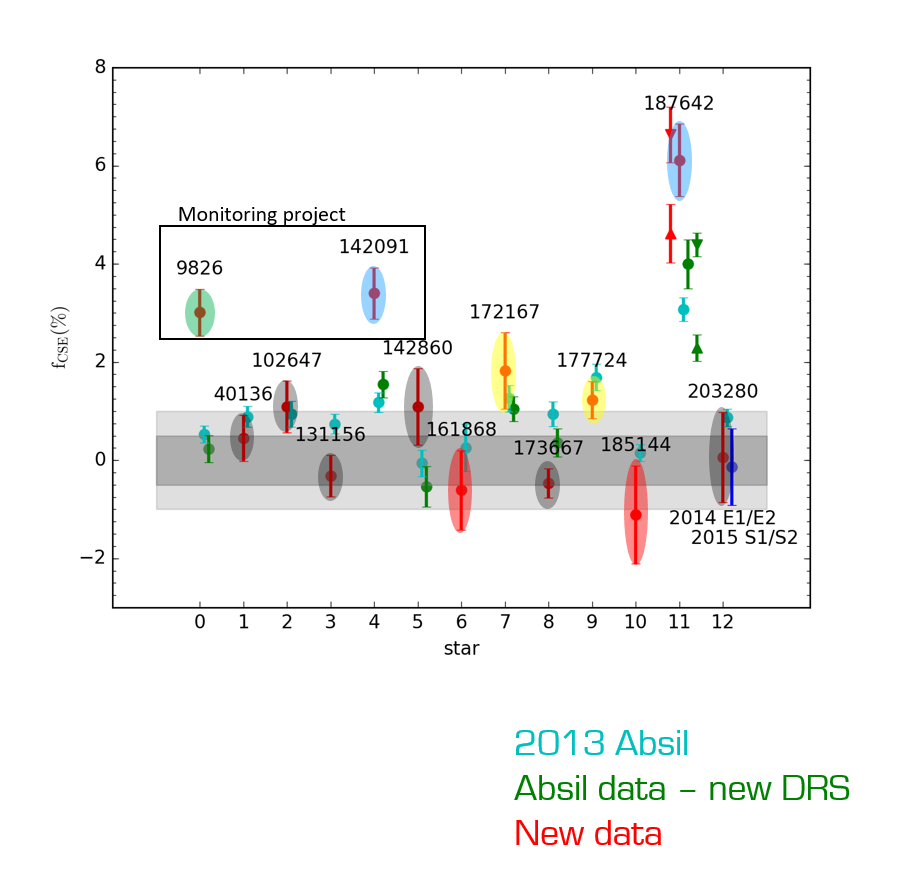
- Excesses not significant
- New excess
- Unchanged excess
- Unchanged non-detection
- Increased excesses
Near Infrared Exozodi Variability Study
Threshold for detection changed to 1% instead of 0.5%


Kappa CrB
Text
E1/E2
S1/S2
Altair
Solar System zodiacal light “zodi”
a < 0.3 – 5 AU
L ≈ \(10^{-7}\) L \( _Ꙩ\)
λ ≈ 19µm
T ≈ 270 K
M ≈ \(10^{-8}\) - \(10^{-9}\) M\(_Ꚛ\)
Short-period comets
Collisional grinding
PR drag transport
Sublimation and pile-up
Grains have complex and varied composition


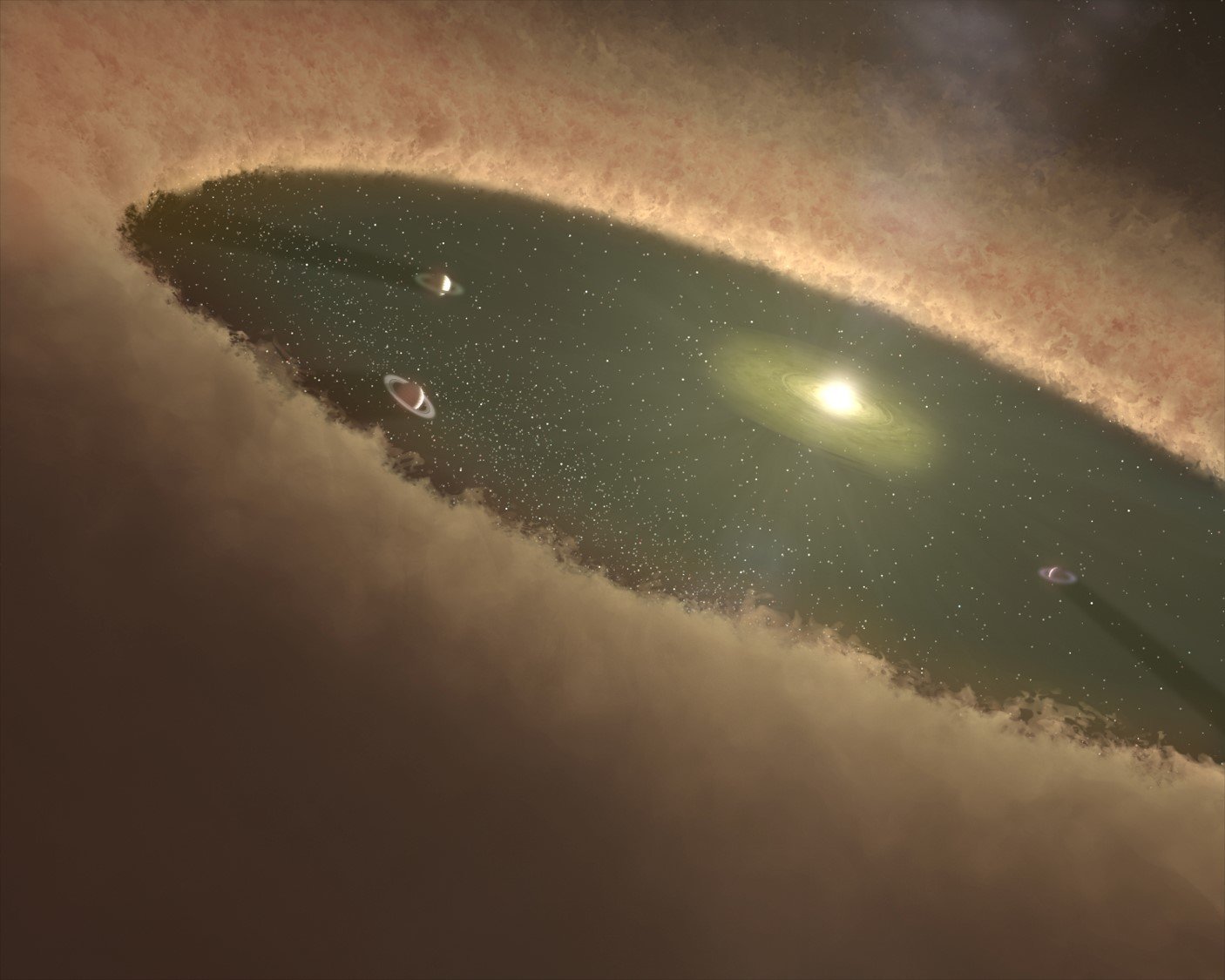
- IRAS, ISO, Spitzer, & WISE
- KIN
- FLUOR/JouFLU
- VLTI/PIONIER/MIDI
- LBTI
What's been used...
-
FIR
- Limited sensitivity
- Cannot resolve > 300K dust
- Limited by calibration and photosphere model accuracy
- MIR
- KIN observed 47 stars to the 150 zodi level
- VLTI/MIDI and nulling can detect MIR excesses
- NIR
- VLTI
- CHARA/FLUOR/JouFLU


2011-12: First spectroscopic detections of very hot excesses [26,27]
2012: VLTI/PIONIER detection around \(\beta\) Pic [28]
2013: CHARA initial survey of 42 single MS stars says it is fairly common (11/40) [15]
2014: On-going efforts to expand NIR spectroscopic surveys [29]
2014: VLTI/PIONIER survey, larger VLTI dispersed H-band survey (9/85) [30]
2014: VLTI/PIONIER survey - binary companions [31]
2015: Nuñez and Scott exozodi survey extension begins
2016: Revisit of initial CHARA sample by Scott finds evidence of exozodi variability
2017: Exozodi extension by JouFLU completed, adding 33 stars to Absil survey[32]
2017-2018: Monitoring of identified variable exozodi hosts
2018: HOSTS survey - 40 stars, overall detection rate: 18% [47]
What we don’t understand
- Grain size
- Grain composition
- Dust source
- Replenishment mechanism
- Incident rate
- Effect on exoEarth detections
- System Architecture
- Effects on habitability
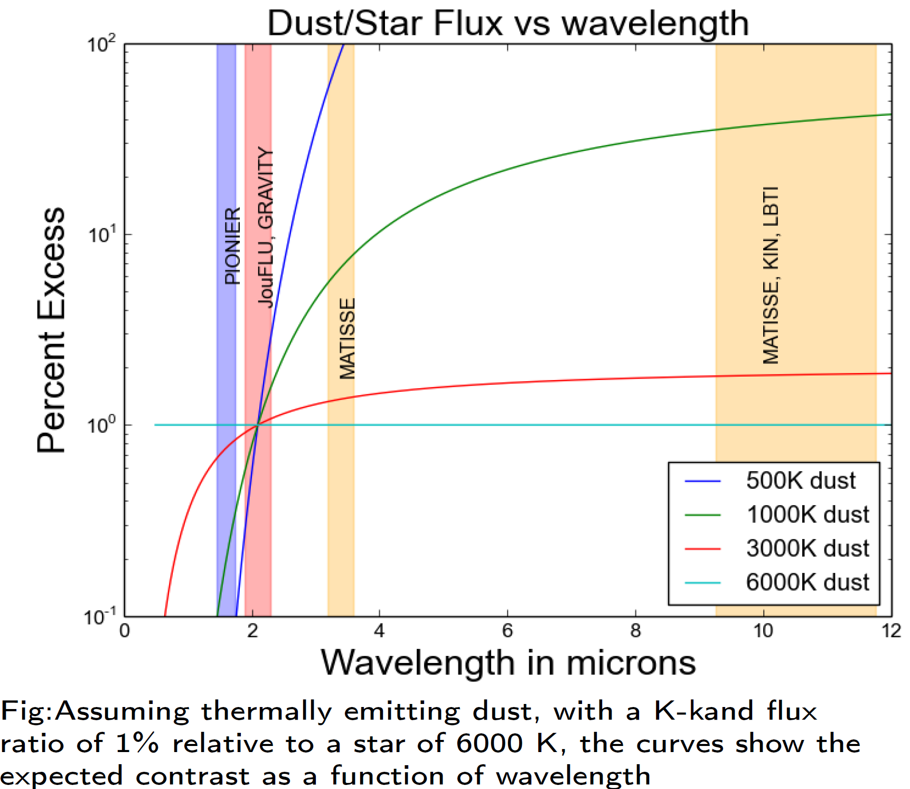
-
LBTI
- HOSTS
- ZESTY
- VLTI
- Gravity
- MATISSE
- CHARA
- JouFLU

Kral et al. 2017
Observing Limits
Spectro-photometry
- Difficult to calibrate, poor stellar model accuracy
- Hard to reach <1% stellar flux photometric accuracy in M/NIR
Long baseline Interferometry
- Limited to bright targets
- Currently limited to many 100s or 1000x zodi
LBTI
- Limited to bright and close sources
- Limited by AO residuals (λ/r0)
Direct Imaging
- Inner working angle too large
- Contrast difficult
Speckle
- Has potential, but requires aperture masking to reach inner working angle
- Complements interferometry
Interferometry is the only way to detect exozodis
FIR/MIR
- Spitzer and WISE found ~1% of young systems had exozodis [6]
- 1-2% have excess at 8.5-12\(\mu\)m [8,9,10,11]
- ~12% have excess at 30-34\(\mu\)m [12]
LBTI N-band observation
- \(\eta\) Crv suggests dust very close to the star (79mas, 1.4AU) [13]
KIN [14]
- 5/47 had 8-9\(\mu\)m excess
-
All earlier than F2

Indications that dust is close to star
LBTI - HOSTS survey
- 68 star sample
- 1st yr results: 30 stars, overall detection rate: 18% at 8-13 \(\mu\)m
- 4 new detections:
- 3 around Sun-like stars (4/21 overall)
- 2 w/o any previously known circumstellar dust. (3/27 overall)
- 4 new detections:
- Occurrence correlated with cold dust (5/7)
- Wyatt et al. 2013 power law underestimates exozodi occurence rate. Stars w/o cold dust have median of 3-12 zodi (Mennesson exozodi distribution estimate in prep).
- While not mission killer, exozodi's are still dominant noise source.
- Statistics are limited
- Extending surveys critical to inform the design of future exo-Earth imaging surveys.
- Now at 40 stars total (May 2018)
Ertel+ 2018

Defrère et al. (2011)
Disk architecture
- Need very high precision at very short baselines
- Regime between long-baseline interferometry and
aperture-masking - How to reveal
morphology of disk and how dust is changing?
Could excess not be due to disk?
- Point sources I: RV & astrometrically stable
- Point sources II: companion of 350 - 1000 mas separation cannot be ruled out (Absil+ 2006)
- PFN limits excess to either very close or very far from star
- Speckle observations rule out stellar companion from 25 - 1200 mas
- Point sources III: field star ruled out by other IR surveys (2MASS, etc)
- 1-in-a-million chance
- Stellar winds
- weak for A stars
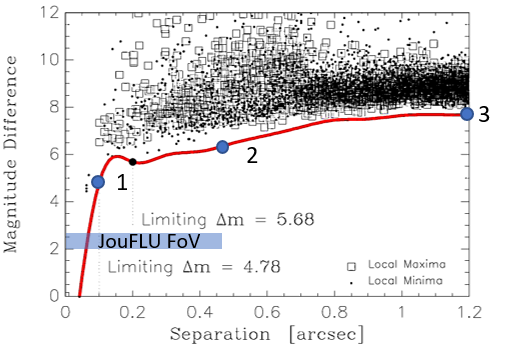
Ups And
Nuñez, Scott, Mennesson et al. 2017
Near Infrared Exozodi Survey Extension
JouFLU observed targets that were fainter in the K-band by about 1 magnitude






1\(\sigma\)
After combining the FLUOR and JouFLU samples, detection rate = 15/69 or 22±5%.
- Some excesses appear to be variable and are being monitored by Scott et al.
KIN [14] did not find a 10 µm excess for these targets, implies:
- dust > 1000 K
- grains < 0.1AU (sublimation region)
- grain < 1µm (blow-out size)
Detection rate (-binaries) = 2/29
- incompatible with the rate of 12/41 Absil+ 2013.
- if we artificially increase the original FLUOR errorbars by 2x, rate = 3/41, which is compatible with the JouFLU detection rate presented here.
Origin of exozodis
PR Drag
Dynamic Instability
MMR
Sublimination Pile-up
Gas Drag
Scattering
Planetary Collisions
Evaporating Planets
Magnetic Trapping
PR-drag
Cold belt continuously feeds inner (but insufficient [18,38])
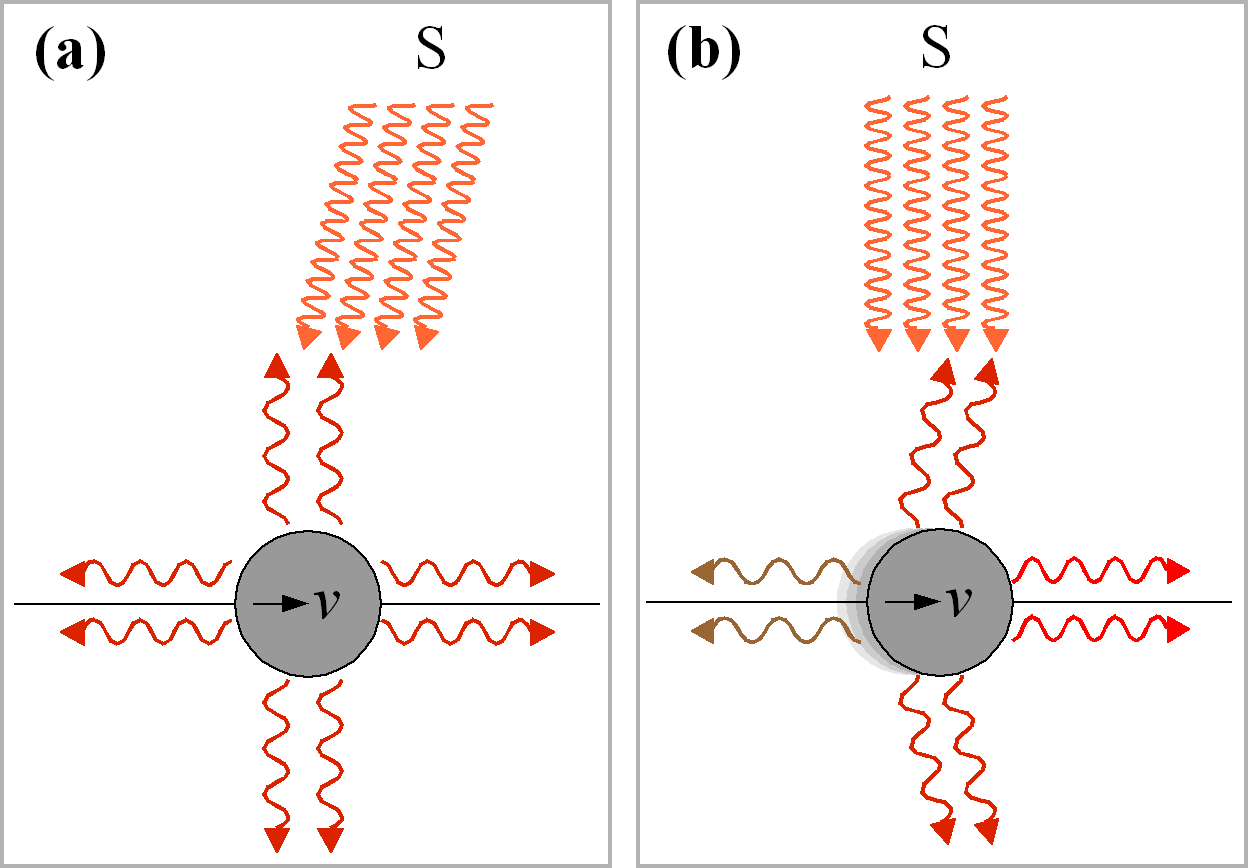
No correlation b/t MIR and NIR excesses found
-
suggests different origin or pile-up of hot grains [14]
- Separately origins for inner and mid?
MIR excesses correlated with cold dust [14]
- Suggests outer region feeds inner through PR drag
- Planet could block dust transport, this could be detectable (LBTI)
Sublimation pile-up
- Dust spirals ins
- Sublimates
- Radiation pressure becomes dominant
- Grain slows its infall
- A pile-up forms at the sublimation radius

However, this has only a small effect on observable signature
Gas drag
- Grains migrate by PR-drag, but are slowed by gas
- The gas could be produced further out in the cold belt
- Gas also extends all the way to the stellar surface
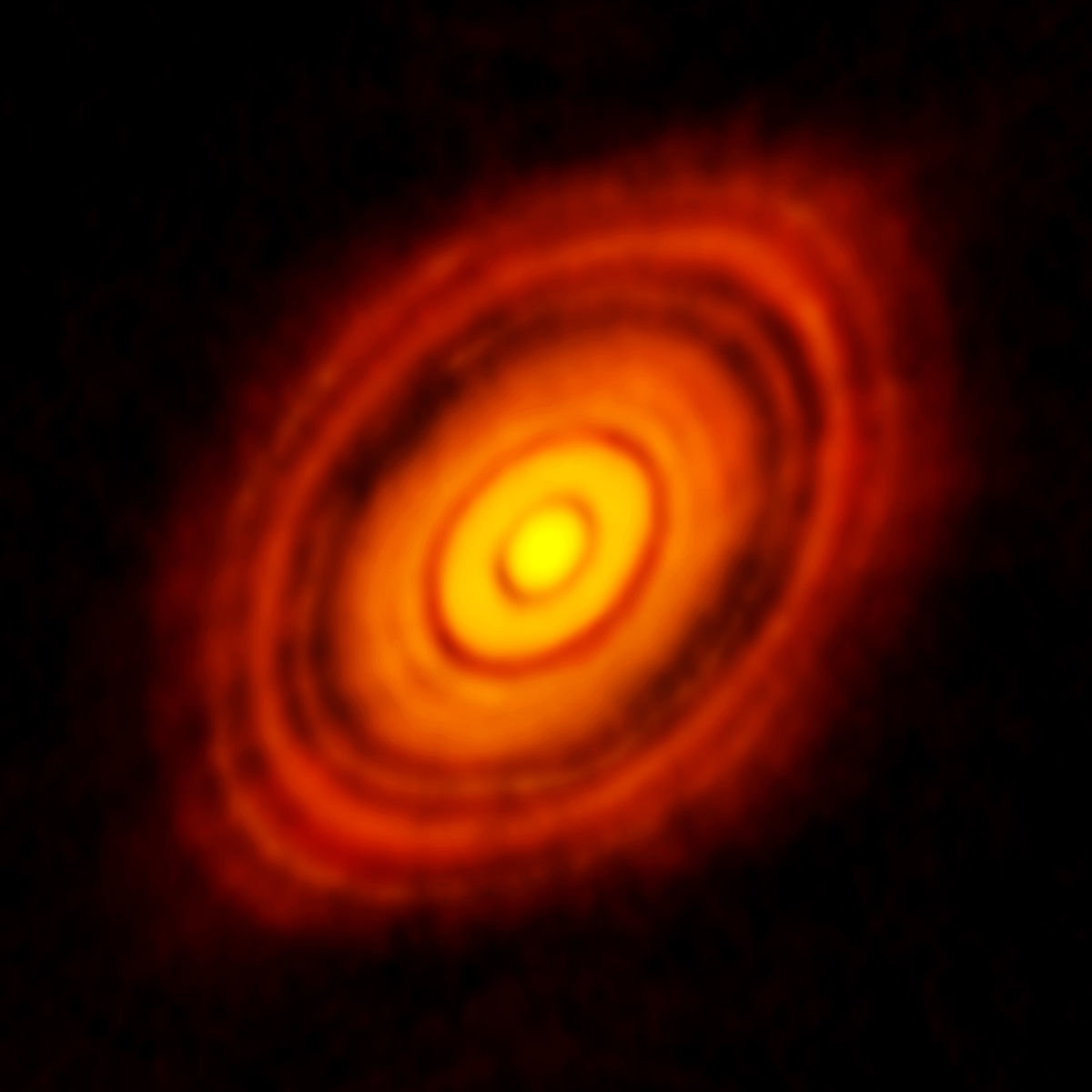
Dynamical instability
- Similar to LHB in SS, produces large amount of dust in NIR and MIR
- Bonsor et al. have shown however, that this dust is too short-lived to explain the occurrence rate of exozodis
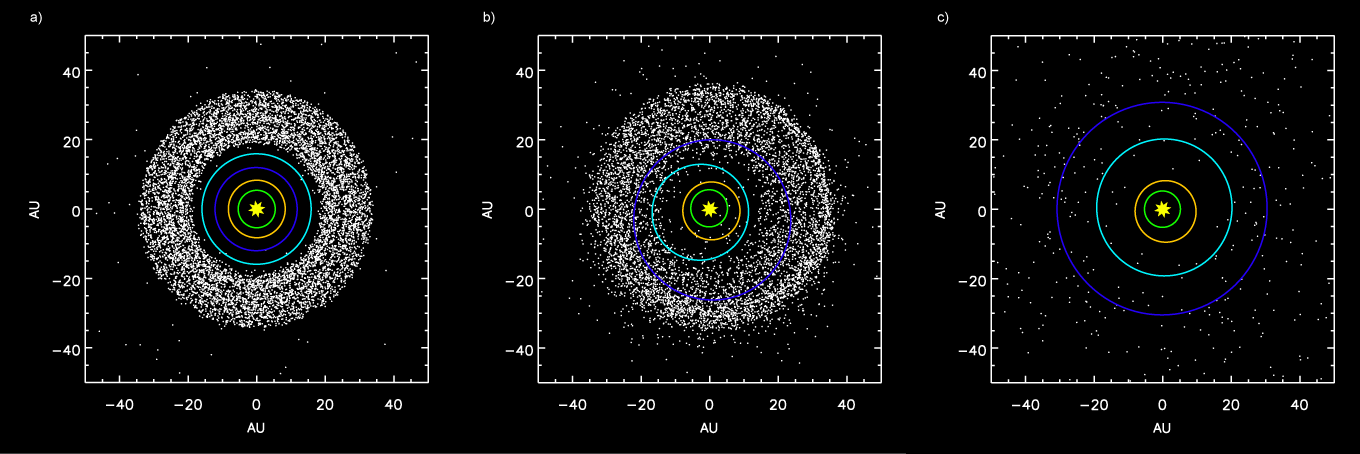

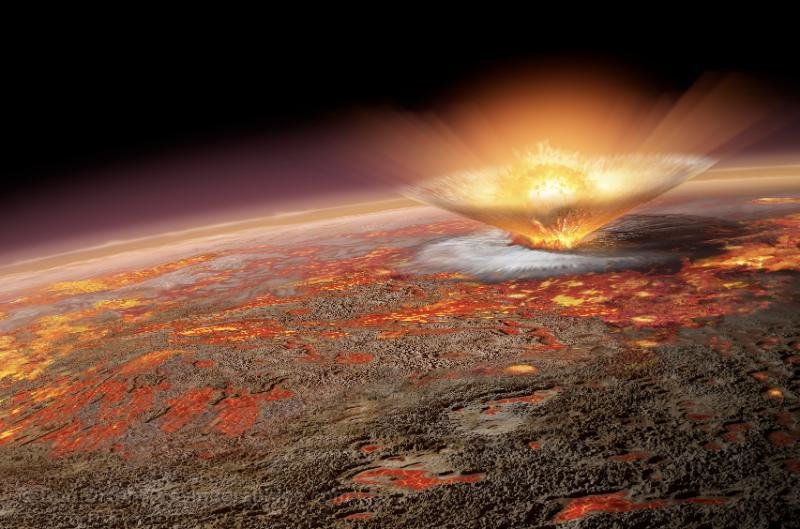
Scattering – by planets/planetesimals
- It moves through the disk, scatters material
- Cold disk feeds inner disk
- Potentially scatters enough material to explain many observed exozodis
Bonsor et al. 2014

MMR (mean-motion resonance)
-
Orbit of comet/planetesimal is pumped to high eccentricity by eccentric planet
-
Bodies get scattered, high sustainable comet infall rate
-
Long time scale (Gyr) and large mass source, capable of explaining SS-like exozodis
-
Same mechanism could trap dust
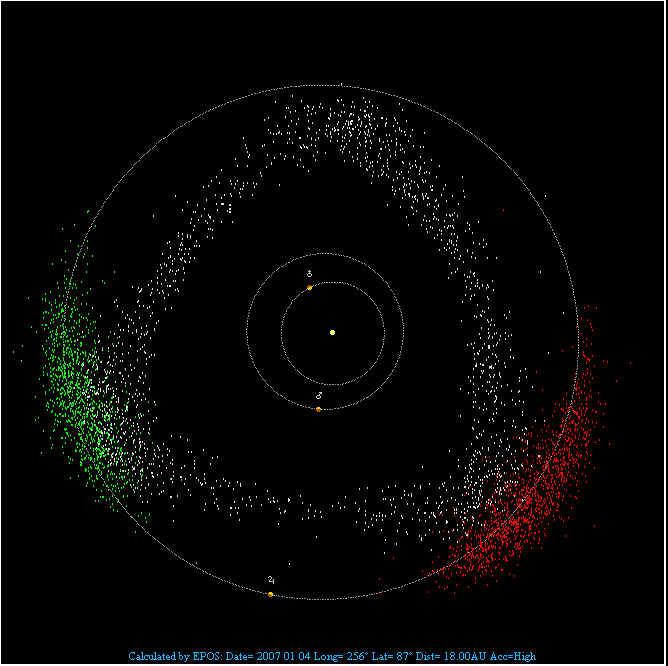

Planetary collisions
- Transient event like that which formed the Moon
- Could explain extreme excesses detected in some systems
- Dust could be observed for ~25 Myr [12,39]
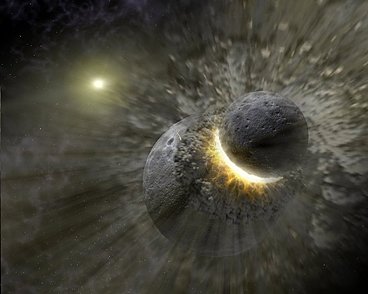
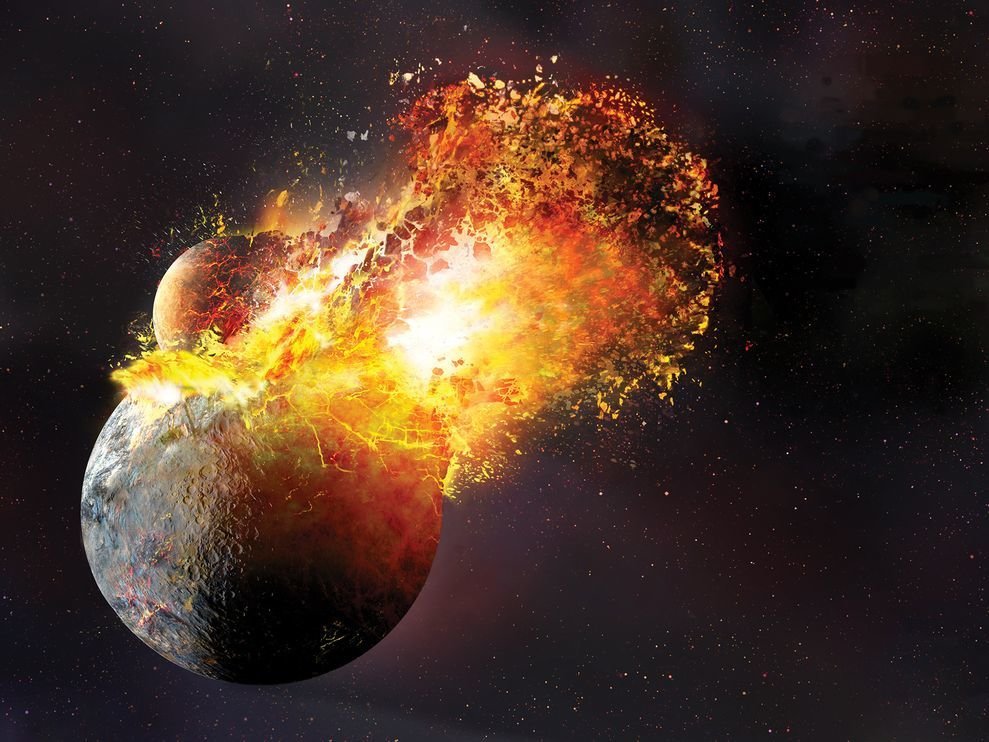

Evaporating planets
- Rocky planets disintegrating
- 3 discovered in Kepler data
- Gaseous outflow and comet-like tail
- Probably too rare to explain most exozodis
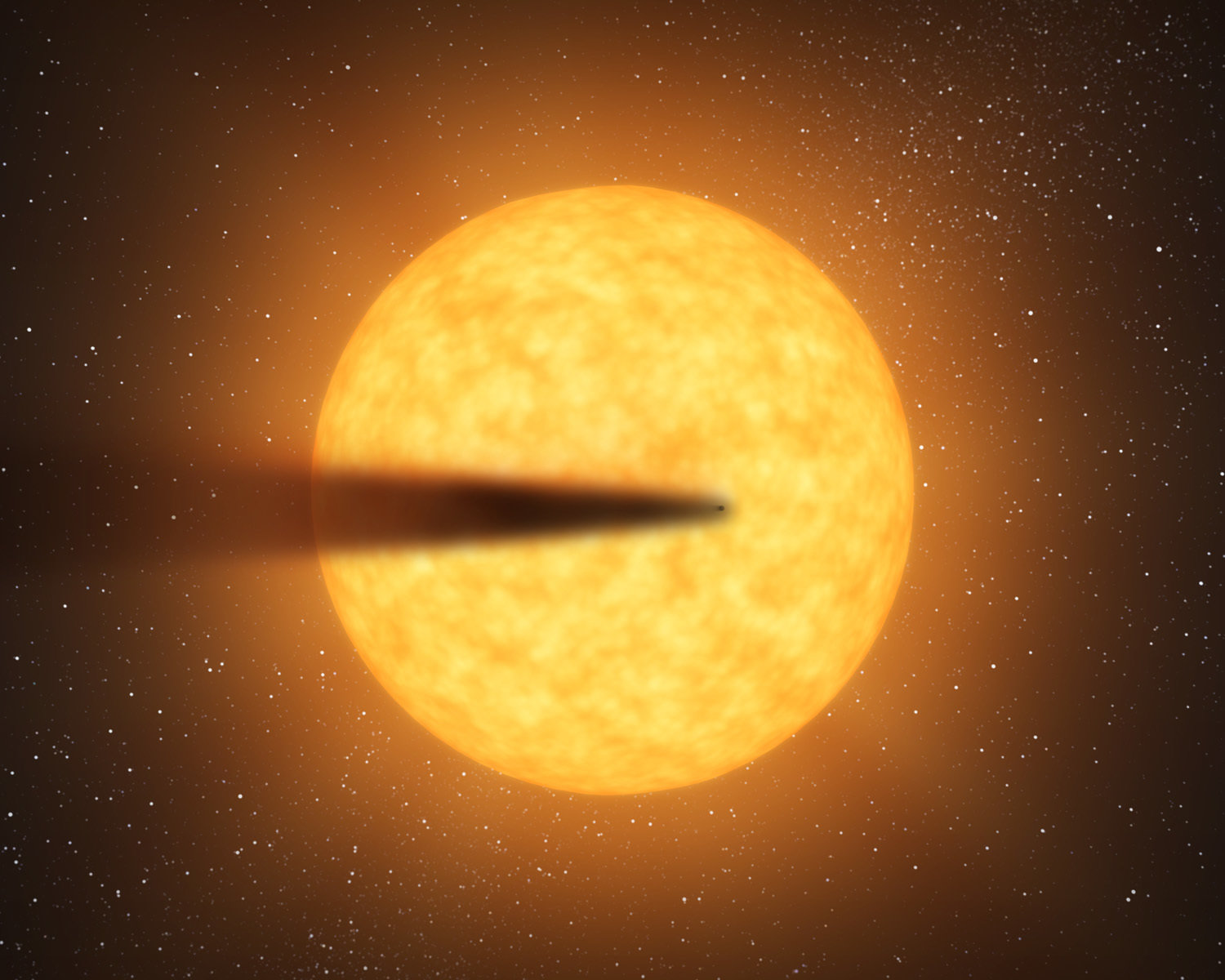
Magnetic trapping
- This gets the level of dust up to that which is observed in NIR
- Submicron grains, charged by photoelectric effect, interact via Lorentz forces [40]
- Magnetic fields are weak for later type stars
- Could be strong enough to trap nanograins
- If magnetic trapping time > than sublimation time, pile-up occurs
- ~5-10 yrs of pile-up needed to produce Fomalhaut’s K-band excess signature [41]
- Grains must surviving radiation pressure and stellar winds long enough to reach nano-size

- Other mechanisms transport dust
- Magnetic fields trap it
- Material piles-up
HD 9826
- F9V
- 4 planets
- 3 companions in WDS (but 55,114,287”)
- spec binary (M4.5V 55” away)
0.53 ±0.17% FLUOR
10/2013
7/2016
9/2016


HD142091
- Variability of F\(_{\mathrm{CSE}}\) seems independent of PA
1.18 ±0.2% FLUOR
6/2015
7/2016


-0.06 ±0.27% FLUOR
HD142860
- F\(_{\mathrm{CSE}}\) changes with PA
- Could be variability of dust
- Could be evidence of inclined disk?




HD222368
- F\(_{\mathrm{CSE}}\) changes with PA
1.3 ±0.3% FLUOR


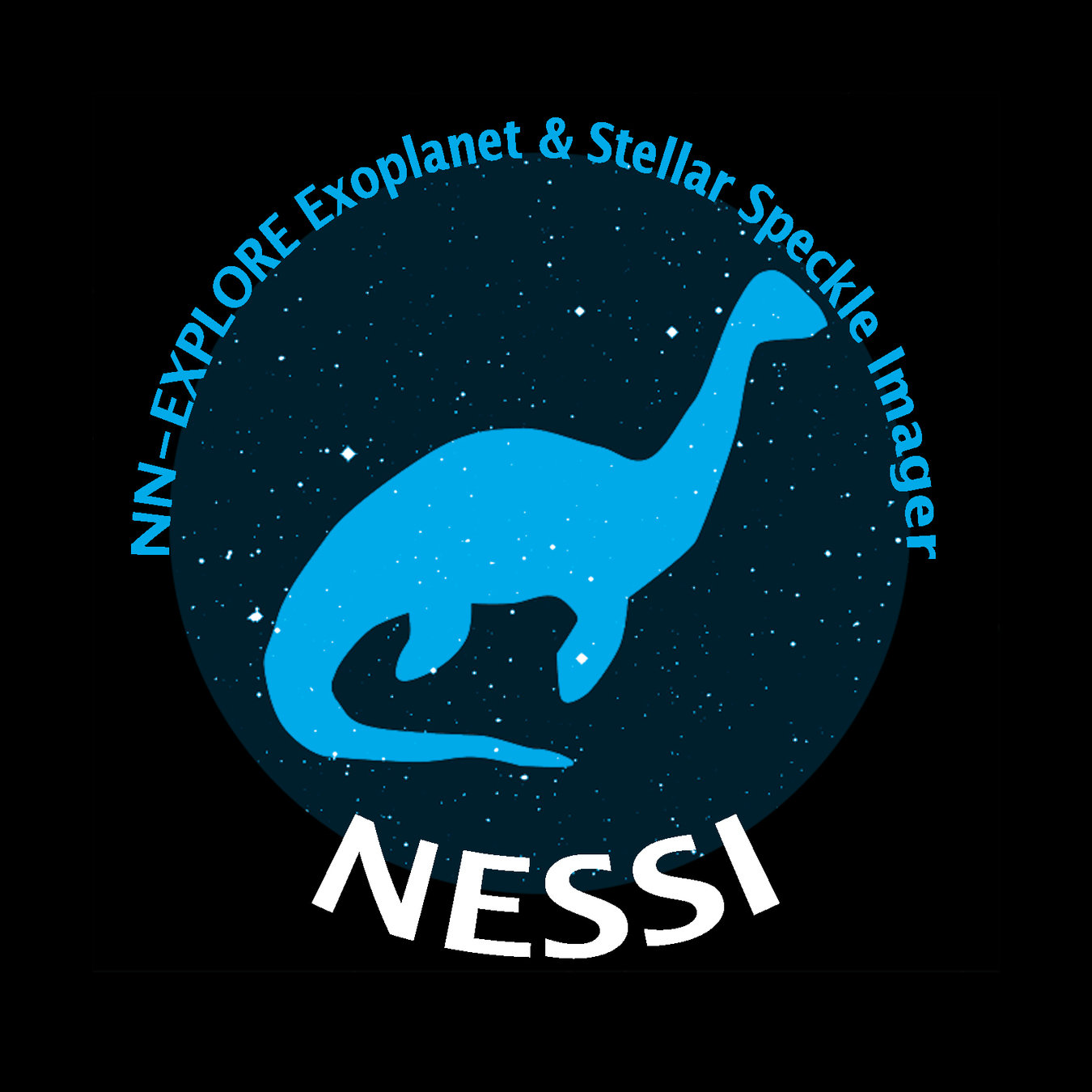
NESSI
- Observations of HD9826 –Oct 2016 at WIYN, <1 min of data
- Constrains the possibility of a faint companion at wide FoV
- Upper limit of the flux ratio at 832nm of a companion located 0.1'' away was found to be 1.6%,
- excludes earlier spectral type than M8V/M9V (T > 2500K).
- 0.4% at the extent of the JouFLU's FoV (T=2100K)
- 0.06% at the extent of NESSI's FoV (T=1700K)

110 Her
Ups And
1
2
3